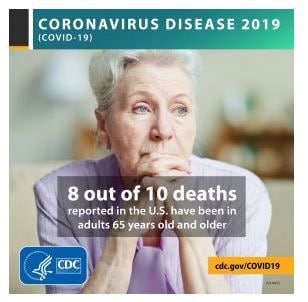Sightings
Jo Freeman: There’s Plenty To Do at the RNC – If You Have the Right Credentials
by Jo Freeman
Every national nominating convention has plenty of auxiliary events, some authorized, some not. Getting space can be a challenge; getting the word out even more so. But they do it nonetheless. Press were given a RNC 2024 Master Event Calendar, which was updated a few days later. Events began on Sunday and ended on Thursday. The actual convention sessions were just one item on the list. The calendar said if an event was Open or Closed to press, and also whom to contact to register. I’m going to describe some of the events, including a couple I went to, and a couple I was turned away from.
Since my focus is on women, I obviously wanted to go to those events – if I could.
The National Federation of Republican Women is the largest grassroots Republican women's organization in the country with hundreds of clubs. Founded in 1938, its members made the phone calls and knocked on the doors that elected Republican candidates for decades. It’s Tuesday luncheon featured Arkansas Governor Sarah Sanders. The Master Calendar said it was SOLD OUT and they wouldn’t let me in. I was able to get into their lounge at the Fiserv Forum Wednesday evening, where I was repeatedly asked if I was a member, and if not, would I join. “I’m press,” I said. “I can’t join anything partisan.” I then said: “What brings you here?” On hearing that, finding anyone willing to chat with me was like pulling teeth.
Moms for Liberty met in a concert hall that afternoon. I had pre-registered, and I got in. From high in a balcony seat I listened to several people talk about the evils of transgenderism. It’s webpage says WE BELIEVE Power Belongs to the People. Sound Familiar? With a focus is on parental rights, it wants to “STOP WOKE indoctrination.”
Tuesday I went to “The New Mavericks” reception co-hosted by the Black Republican Mayors Association and the Georgia Republican Party. They honored Sen. Tim Scott, four Congressmen and two Georgia delegates – all male. There was only one mayor on stage, from Aurora, IL. The chair of the Georgia Republican Party was the one white man on the stage. At that event, women served; they didn’t speak. The RNC reported that 55 delegates to the 2024 convention are Black, up from 18 in 2016.
I missed the Independent Women’s Forum toast to “Women Who Make Our Country Great” because I went to Convention Fest: The Official Delegate Experience, which was held in the streets outside the Fiserve Forum and Baird Hall as well as some space inside Baird. To get to that one you not only needed a credential of some sort, but a USSS pass (which I have).
Concerned Women for America parked its pink bus across from the Baird Center the week before the RNC. No one was home. When Convention Fest opened on Tuesday afternoon, they set up a pink tent, from which its leaders preached to whomever passed by. It calls itself “the nation’s largest public policy women’s organization” but its focus is evangelical Christian. The slogan on the side of its pink bus captures this emphasis: “She Prays, She Votes.” A prayer precedes each sermon.
 How Older Bodies Respond to Illness and Infection: Older Adults With COVID-19 Show Unusual Symptoms, Doctors Say
How Older Bodies Respond to Illness and Infection: Older Adults With COVID-19 Show Unusual Symptoms, Doctors Say
“With a lot of conditions, older adults don’t present in a typical way, and we’re seeing that with COVID-19 as well,” said Dr. Camille Vaughan, section chief of geriatrics and gerontology at Emory University. The reason has to do with how older bodies respond to illness and infection. At advanced ages, “someone’s immune response may be blunted and their ability to regulate temperature may be altered,” said Dr. Joseph Ouslander. “Underlying chronic illnesses can mask or interfere with signs of infection,” he said. “Some older people, whether from age-related changes or previous neurologic issues such as a stroke, may have altered cough reflexes. Others with cognitive impairment may not be able to communicate their symptoms.” more »
 A 2020 Dr. Fauci YouTube Conversation About Pandemics and His History: National Institutes of Health Begins Study to Quantify Undetected Cases of Coronavirus Infection
A 2020 Dr. Fauci YouTube Conversation About Pandemics and His History: National Institutes of Health Begins Study to Quantify Undetected Cases of Coronavirus Infection
“This study will give us a clearer picture of the true magnitude of the COVID-19 pandemic in the United States by telling us how many people in different communities have been infected without knowing it, because they had a very mild, undocumented illness or did not access testing while they were sick." Dr. Anthony Fauci more »
 Department of Justice Halted a Purported “ozone therapy” Center in Dallas From Offering Unproven Treatments for Coronavirus Disease
Department of Justice Halted a Purported “ozone therapy” Center in Dallas From Offering Unproven Treatments for Coronavirus Disease
On Instagram, Purity Health & Wellness claimed ozone was the “only prevention” for COVID-19 and insisted the treatment could “eradicate” the virus. The center also claimed ozone could combat other deadly diseases, including cancer, SARS, and Ebola. “We will not allow anyone to illegally profit by exploiting the fear and anxiety related to the COVID-19 pandemic,” said FBI Dallas Special Agent in Charge Matthew J. DeSarno. “The FBI and our partners are working together every day to prevent, detect, and dismantle COVID-19 fraud.” more »
 Who Are Organizational Payees? Some Social Security Beneficiaries Rely on Organizations Like Non-profits or Nursing Homes to Help Them Manage Their Benefits.
Who Are Organizational Payees? Some Social Security Beneficiaries Rely on Organizations Like Non-profits or Nursing Homes to Help Them Manage Their Benefits.
Some Social Security beneficiaries rely on organizations like non-profits or nursing homes to help them manage their benefits. The Social Security Administration monitors these organizations to ensure benefits are not being misused. Yet SSA does not require background checks for key employees of such organizations as it does for relatives or friends that assist beneficiaries. In addition, SSA accounting forms make it difficult to track in detail how these funds are spent. We made 9 recommendations, including that SSA redesign its accounting forms and look into requiring background checks for employees at these organizations. Social Security beneficiaries may rely on non-profits or other organizations to manage their benefits. more »






